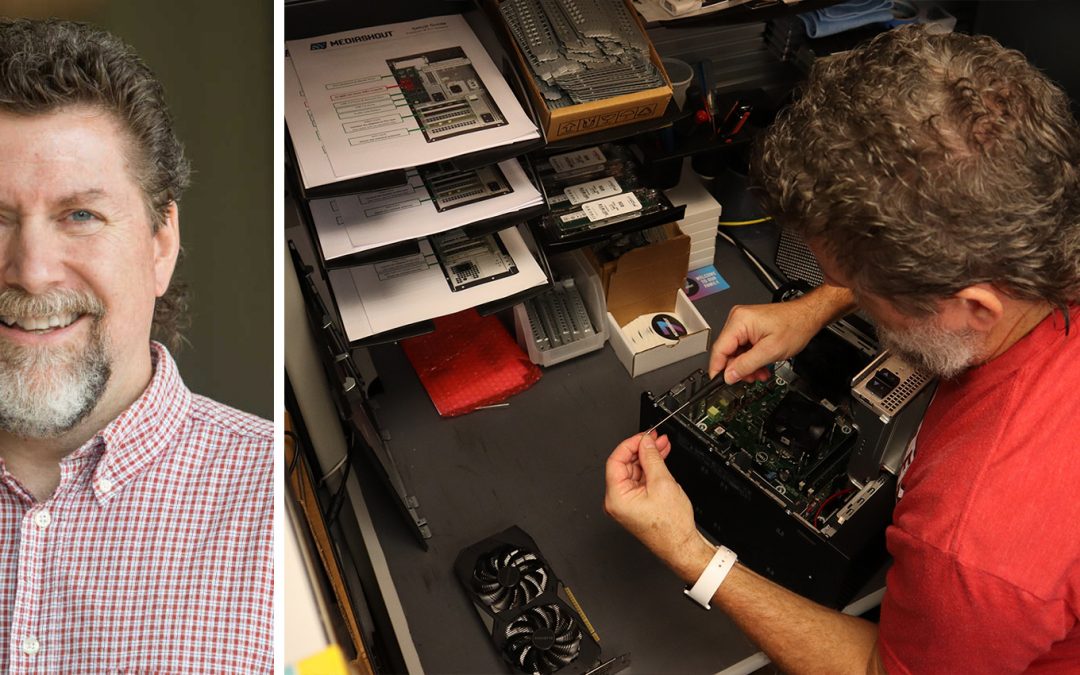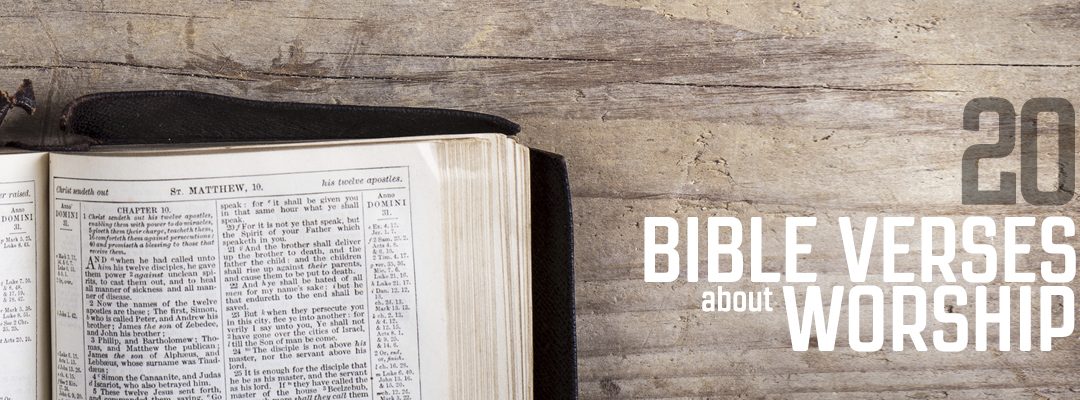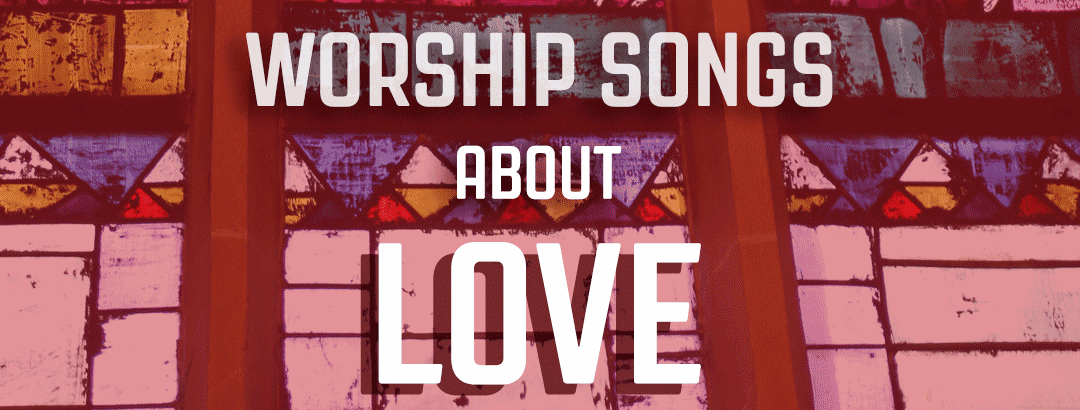Have you been tasked with buying or recommending a computer to run church presentation software during your church services? ? We understand that deciding on the best hardware to operate your worship presentation software can be confusing. So we’ve prepared this quick reference guide to help you understand the specs that matter most, the warranty concerns you should consider, which OS to choose (Windows vs Mac), and how long you should plan for your computer to last. Armed with this information, you will be well equipped to make a great decision that serves your church for years to come.
Why is it so hard? (Hint: It doesn’t have to be!)
Computers are supposed to be the ‘tools of the future’ that make our lives easier, but it’s amazing how complicated it can be to find one with the right balance of power and price for the application. When shopping for a computer that runs Microsoft Windows, there is an almost limitless variety of options across a wide range of prices. This can be bewildering if you don’t have a strong computer hardware background and you don’t want to spend weeks studying spec sheets and pouring through reviews. Smart shopping becomes even more important when purchasing church computers—where every dollar needs to be spent as wisely as possible. Making a mistake on this purchase can be an expensive problem. Because computer vendors often cater to the extremes of either ‘bottom-dollar discounts’ or ‘enthusiast-grade lavishness’, it can be time-consuming to select a computer system for your ministry presentation needs that provides a balance of value, longevity, and performance.
Does the system really matter?
MediaShout software provides a unique set of features that make use of hardware and operating system resources in ways that are different than the requirements of most other software. Properly selecting computer hardware that has power where it’s needed, without wasting money on bells and whistles that are unnecessary (or even a hindrance), will ensure that your ministry presentations can be prepared and displayed with the least difficulty and expense possible.
Which parts matter most? (#1-4, Hardware)
Since MediaShout 7 has been built from the ground up to take full advantage of modern software and hardware, there are several systems in a presentation computer that are nearly equally important for strong performance. For each of the computer bundles that we assemble, we have selected hardware components that will allow our software to excel:
- CPU (Processor) – The speed at which the processor can handle the many instructions needed to load media files and combine those with text to send to the video card is very important. We have found that the Intel Core i-series processors do a very good job, but it’s not worth the extra expense to get the very fastest processor in a family. The steep difference in price for the top-of-the-line CPU doesn’t provide a noticeable difference. The latest generation of upper-midrange i3, i5 and i7 CPUs are high quality and much faster than even the fastest CPUs from a couple generations back, and each of them work very well with MediaShout 7 software. Having at least 4 cores is very helpful, and even the latest desktop versions of the Intel i3 are now very quick quad-core processors.
- GPU (Graphics Processing Unit, or Video Card) – Whether you’re dealing with video files or other graphics like the display of Bible verses, countdown timers or sermon notes, it’s very important to have graphics hardware that is dedicated to rendering the screen and doesn’t have to compete with the CPU for power or heat dissipation. The latest ‘onboard’ or ‘integrated’ graphics cards from both Intel and AMD are much better than in years past, but dedicated cards have the additional capacity to provide a much better experience. In addition, they usually provide more outputs for connecting your displays. The good news, however, is that a solid mid-range video card is all that you need for MediaShout use. High-end video cards do not provide any features that improve or speed up the types of display rendering that MediaShout uses. Our favorites are the NVidia cards because we’ve found them to be very reliable, and the driver software is kept up-to-date and is easy to download and install.
- RAM (Memory) – Over the last couple of years a new memory standard, DDR4, has come into common use, and it can make a difference in the overall speed of your system. Because it’s the second biggest bottleneck in a computer, having faster RAM can make your system more responsive. And when running software like MediaShout, that can give you better ‘real-time’ responsiveness. Breaking the ‘more is better’ myth, having 4 to 8 GB of RAM is perfectly fine for anything MediaShout does, though we do offer more in our Pro systems because we anticipate that those will also be used for video or graphics editing software that can take advantage of additional memory. Windows 10 uses memory much more efficiently than previous versions, and because of the way that it handles memory, having more than you need can actually cause Windows to write larger files to your hard disk when it backs up or swaps the contents of memory to disk, thus reducing the speed of booting, shutdown and certain other tasks.
- Hard Disk or SSD (Storage) – Current generation 7200 rpm hard drives still provide very nice performance, capacity and reliability at a reasonable price, and we use them in all of our systems because they provide a lot of room to store large media files. While still quite expensive, and with some models having question reliability and longevity, SSD’s (Solid-State Drives) can offer amazing speed and responsiveness. For this reason, we have selected the Samsung 970 Pro SSD for the boot drive in our Pro systems, but we also provide a copy of that drive on the secondary 1TB hard drive in the rare event that there is a failure. There isn’t a lot of noticeable difference in responsiveness during typical usage, but an SSD can really speed up booting, shutdown, and very disk-intensive tasks. If you would prefer an SSD, we can add one to our Standard and Premium desktop computer bundles for an additional fee.
As you can see, there is a lot that goes into selecting components that will provide a good balance across the whole system and avoid having one weak link ruin the performance of the other quicker parts. In addition to balance, the quality of the parts can often play an important role, and because we’ve been assembling PC bundles for several years, we’ve learned which brands provide the best reliability and long-term value. For that reason, we select well-built business and workstation-class systems, and we add carefully curated additional parts to provide a system that has all the performance you need—without any of the fluff that you don’t.
What happens if it dies? (#5, Warranty)
Despite the best efforts of manufacturers, nearly everything made has a failure rate somewhere above zero. So it’s important to decide whether you want to risk having an otherwise annoying situation instead turn into a major fiasco. Unfortunately, most home-use, consumer-grade computers use the cheapest components and offer the worst warranty support when they fail. It definitely adds to the cost of the system, but if you end up as the unlucky statistic that encounters a hardware failure, you’ll be glad if you selected a system that provides a good warranty. This is an important reason why we select business-class systems to begin with, and why we insist on a 3-year warranty on those systems. As our partner on the base computer systems, Dell provides some of the best and quickest support available. While we hope you never need it, having it there can help minimize the pain of an untimely failure.
What about the OS? …and what is an OS, anyways? (#6, Operating System)
This is often where battle lines are drawn. The ‘North vs. South’, ‘Coke vs. Pepsi’ and ‘Calvinist vs. Arminian’ debates have nothing on the ‘Windows vs. Mac’ debate! And while we love them all, there are many strong preferences and beliefs around each of these. In the area of computer operating systems, there are good and bad points for both Mac and Windows systems. But in terms of overall value and flexibility, Windows is generally the better option in most situations. Regardless of your decision, however, as the software that controls and interacts with all of your hardware, the operating system that you choose can have a dramatic effect on your computer’s performance. And the way that you configure and maintain it can also make a difference. To help prevent a system installation that is bogged down with ‘bloatware’, we always use a fresh, default installation of Windows 10 Pro on the systems that we build. Then we install only what is essential for MediaShout use and ensure that everything is as up to date as possible. This provides an environment that is ready to support modern software, and it presents a clean workspace for you to add the media and presentations that you need without a lot of clutter getting in your way.
How long should our new computer last?
There are several schools of thought about PC lifespan. Some people are inclined to buy more than they need now with the idea that they’ll need it down the road, and they hope to get five years or more use from the system. Others take a shorter view. In the business world, it’s a pretty common practice to replace technology on a three to five-year interval, and we have found that to be a good idea. You should plan for at least three years of service, and at that point begin making plans to replace or reassign. The wonderful thing about systems that are well specified for MediaShout is that even after they’re past their prime usefulness as a presentation computer, they still have a lot of useful life left as general-purpose computers in other areas of ministry, or in less critical presentation or backup roles.
We hope that this information helps you better understand some of the nuances involved in the process of selecting a computer system that is properly equipped to run your presentations well. Whether you choose to design your own system, or you purchase one that we have preconfigured, our goal is to provide the information and assistance that you need to have a great experience presenting with MediaShout 7. Please leave a comment and share your experience with church computers, as well as any tips you may have. Thanks!












Wow I was bless ready this cause we are a small church trying to do big things for the kingdom of God can u send me some more information. Thanks
Carl, we’re so glad you found Dave’s blog useful! We will send you information on our computers shortly. God bless you and your ministry.
I attend a smaller church in West Virginia. We have been using Media Shout since version 3. We are currently on vs 6, love it, love it, love it. We have purchased 2 computers from them over the past 2 or 3 years. Both have performed just as promised. Fantastic company, fantastic product, and sincere about lifting up Jesus. Thanks MS.
Richard,
Thanks for sharing your feedback! We love to hear from our users who have had a great experience. We love serving and doing everything we can to give you tools to serve your church. Be blessed!
Very good article. My 22 years of computer building and repair played a part in the one that I build for my church when we upgraded to MS 4. It is still going and I anticipate 15 years of service from it. The same line of thought given in the article was exactly what I used with it. The only disagreement I have is the brand you use (my last choice). My preferred choice would be a hometown computer store build with my specs. The higher quality parts makes the difference and I have never seen that in Dell.
Thanks again for the reminders that you presented very well in this article.
Henry,
With many companies, they have a consumer-grade and professional-grade line of components. When we get our computers from Dell, Dave personally picks specific components for each system. All of our Dell computers are custom builds with components we pick. One of the reasons our computer systems are so solid and last so well is because we make sure the guts are quality. If a user does want to build their own (like you), we do recommend using a local computer store to get the best products and service (chains are focused on consumer-grade, so make sure you do spend the extra to get the professional-grade – it will make all the difference in the long run). Thanks and be blessed!
Thank you for instructions on how to choose a computer but can tell me what is the good brand that will not give problems
How is Media Shout now configured to work with online streaming? What do I need to be aware of when choosing one that will work with Boxcast streaming.
Can one of the computers be used to run Media Shout while also controlling multiple camera feeds and audio input to stream live?
Hey Alan! Great questions. Jump over to mediashout.com/obs to see how to stream with MediaShout. Our Premium and Pro PCs and laptop are all suited for streaming. Reach out to us at [email protected] if we can help further!
Wow its so amazing tips. this post is very helpful to us. Its really wonderful article. Thanks for sharing this tips.
Thanks for this article. The ‘which parts matter most’ section was exactly what I needed. There are so many critical components to get presentation software and AV technology to work together properly. Great tips!